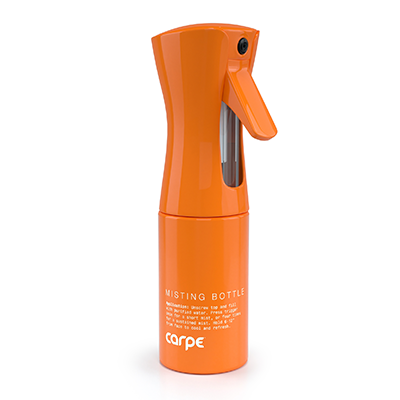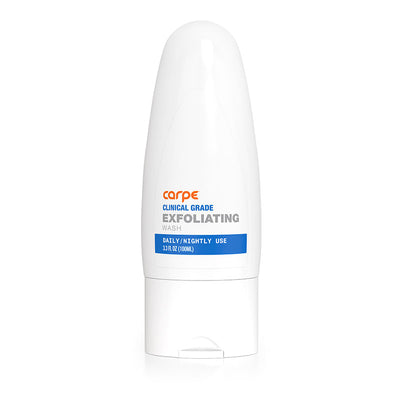Around the world, an estimated 365 million people suffer from hyperhidrosis. Hyperhidrosis is a condition that causes a person to sweat excessively for no apparent reason. Do you know how to tell if you have hyperhidrosis? [1]
A person without hyperhidrosis will sweat in reaction to environmental stimuli in order to regulate their body’s temperature. However, for people who have hyperhidrosis the underlying genetic (Primary Hyperhidrosis) or medical (Secondary Hyperhidrosis) circumstances that cause hyperhidrosis cause them to create an excessive amount of sweat. In most cases hyperhidrosis is not bad for your health, but symptoms can range in severity from simply uncomfortable to medically invasive. From sweaty hands that lead to embarrassing handshakes, to profuse sweating on the feet that can cause serious infections, hyperhidrosis poses a significant problem to individuals across all ages.[1]
Trying to figure out how to control sweating on your hands, feet, or other body parts? Although hyperhidrosis cannot be completely cured, several treatment options exist to help you control sweat caused by hyperhidrosis. For years, hyperhidrosis was largely overlooked by both the research and clinical branches of the medical profession. However, there are currently several treatments, procedures, and even surgeries, that are a result of increased research and development that can provide individuals with much needed relief.
How to Control Sweat with a Doctor
Fortunately, dermatologists stand prepared with a myriad of treatment options to help you learn how to control sweating. Dermatologists are the best doctors for treating hyperhidrosis as they have more specific knowledge than general practitioners.
Prescriptions
As the first line of defense, your dermatologist may write you a prescription for a topical cream or a pill. Topical creams typically include a sweat-blocking aluminum solution like aluminum chloride or aluminum sesquichlorohydrate. These solutions will reduce the amount of sweat that can exit your pores when applied to the skin on a specific problem area. Additionally, your doctor may prescribe an oral medication for hyperhidrosis like a pill series of pills known as anticholinergics. Anticholinergics like glycopyrrolate or oxybutynin stop a chemical called acetylcholine from reaching certain nerve receptors that are connected to sweat glands.[2] When these nerve receptors are blocked sweat glands receive fewer messages from the brain telling them to produce sweat. This decreases the amount of sweat a person produces and helps them control sweat production (a.k.a. they make less sweat).[1]
Iontophoresis
Iontophoresis is a treatment for palmar (hand) and plantar (foot) hyperhidrosis that involves running a mild electrical current into the body that temporarily stops sweat glands from producing sweat. [3] During iontophoresis sessions, the affected part of the body is placed in a pan of water. A mild electrical current is administered through the water over a 20 to 40 minute period. Iontophoresis sessions must occur on a regular basis (typically weekly) for them to be effective. It may take up to ten sessions before sweating is noticeably reduced.[3] Iontophoresis really does work, and many people have gotten significant sweat control from treatment. Since the affected part of the body must be submerged in water, iontophoresis works best when it’s used to alleviate sweaty hands and feet. For some, the process of iontophoresis may need to be altered in order to make iontophoresis more effective.
Surgery
If you can’t figure out how to control sweating by using prescription medication or iontophoresis, your dermatologist may recommend a surgical treatment for primary focal hyperhidrosis to reduce your sweating. These procedures range from minimally invasive measures, like botox treatment for hyperhidrosis, to significantly more invasive procedures such as an endoscopic thoracic sympathectomy or an endoscopic lumbar sympathectomy. Although invasive surgical intervention should only be attempted after less invasive methods have failed, surgery can provide significant relief for people with certain kinds of serious hyperhidrosis. [1]
How to Control Sweating at Home
Over the Counter Topical Treatments
Before seeking a prescription medicine to control sweat, you may want to try an over-the-counter topical treatment for hyperhidrosis. Wondering whether you should use an antiperspirant or deodorant? If you have hyperhidrosis, then you should definitely be using antiperspirant to control sweat. There are several over-the-counter creams and solutions that contain lower percentages of the same ingredients found in prescription creams. These can be purchased both online and in retail settings. Antiperspirants have the ability to prevent sweat from reaching the surface of the skin, unlike deodorant. Some people have a difficult time choosing the right antiperspirant, as there are so many options on the market. Getting recommendations from a dermatologist and understanding the active ingredients in each product can help. Some rumors have gone around the internet questioning whether antiperspirant is safe and, to date, no studies have found that antiperspirant is bad for your health. [1]
Iontophoresis Sessions at Home
Although iontophoresis sessions may be performed at a doctor’s office, many people opt to purchase their own iontophoresis machines and conduct iontophoresis treatments at home. [1]
The upfront cost of an iontophoresis machine is hundreds of dollars, but there are advantages to this method. These advantages include convenience, time saved, and eventual savings in cost from avoiding the pay-per-session model of doing iontophoresis in a doctor’s office.
Controlling Sweat with Non-Medical Methods
In addition to traditional medical approaches, there are ways to manage hyperhidrosis via alternative methods. People can make changes to their exercise routines, choice in clothing, and daily habits to reduce their sweat production. Athletic approaches, like yoga, can help alleviate sweat by relaxing the body. There are also anxiety reduction techniques that can be used to calm the nervous system and control sweat. Selecting clothing that is best for people who sweat excessively can make getting through the day more comfortable. This means choosing clothing that allows the body to breathe, always wearing dry socks, and alternating various pairs of shoes can help curb the effects of excessive sweat. It is also important to establish a consistent routine of applying antiperspirants at the same time each day.[4]
Use Clothing to Conceal and Control Sweat
What you wear can really make a difference! Wearing breathable fabrics can reduce sweating and allow for ventilation when it inevitably does occur. Clothes with good ventilation are made from cotton and natural fibers that are lightweight and airy. It can also be helpful to wear moisture-wicking workout clothes when appropriate. Make use of the wide array of products available on the market today. How you dress can make a big difference to your overall quality of life, especially during certain seasons. Here is how to dress in the summer for hyperhidrosis.
Use the color of your clothing to mask sweat throughout the day. This means wearing darker colors and bold patterns so that sweat stains are less visible. Specifically, colors like black, charcoal, pale pink and navy blue are all solid choices. Avoid wearing colors like light gray that make sweat stains more obvious. Bold patterns will also diffuse the appearance of sweat stains so try a plaid or floral design.
TThe shape of your clothing can prevent or greatly minimize outward stains. For women, think about wearing shirts with loose fitting armpits and flowy blouses. These are comfortable and will make it harder for moisture to reach your clothing. For men, consider wearing an absorbent undershirt to soak up moisture before it reaches the outer layer of your clothes. For all over sweating, loose clothing that does not cling to the skin is a must - think flowy dresses for women and loose-fit pants or shorts for men.
If you find that you are soaking through clothes daily then there is another solution available to control sweat. There are pads specifically made to soak up underarm sweat. These conveniently adhere to garments and can be used in cases where you know other measures may just not be enough. You can also use special powders on your feet to prevent moisture build up and irritation.
Sometimes sweat is just going to happen, so bring back up clothes! If you know you are going to be in a situation where sweating is inevitable, bring a change of clothes to keep in your car or bag. You can also keep a stash of helpful products like absorbent pads, antiperspirants, and a towel.
Protect Your Feet
Feet are the foundation of your body so it is essential to keep them dry and well cared for. There are several ways to stop excessive foot sweating . Try wearing shoes made of fabric as these are more breathable and less stifling. You should also invest in sock material that is good for sweaty feet, like moisture wicking socks that are lightweight, especially when working out![5] For those times when you must wear shoes that make you sweat you can try special sole inserts that soak up extra sweat and reduce slipping. Don’t let the skin on your feet become irritated as this can lead to wounds, infections, and many more preventable problems.[1]
Learn to Relax and Take Care of Your Body
Although hyperhidrosis is a physical condition, your emotional state can have an impact on how it affects you day to day. The more aroused your nervous system is the more likely you are to sweat excessively. There are a variety of techniques you can use to calm your mind and slow down your sweat. Some useful techniques include mindfulness, deep breathing, stretching, and exercises like yoga. All of these activities are grounding and give your mind and body a chance to slow down and reset. Relaxing activities can be used as both a preventative measure and as a way to control sweat once it’s begun.[4]
Another way you can control sweat is through your diet. What you eat and drink can help or hinder hyperhidrosis symptoms. Try to avoid triggers like spicy foods, fatty processed foods, alcohol, and caffeine. Spicy foods can trick your body into thinking your temperature is rising and highly processed foods are hard to digest and can increase sweating. Both alcohol and caffeine increase sweat production because of the way they work in the body. Also, it’s important to drink plenty of water to prevent dehydration and keep your body in a balanced state.[5]
Hyperhidrosis is manageable, and studies have found that hyperhidrosis is likely to get better with age, so find the things that make you feel better and enjoy your life. You are not alone and you can feel better!
Sources
- Pariser, D. M. (2014). Hyperhidrosis (4th ed., Vol. 32). Amsterdam: Elsevier Pub. Co., 2014. Retrieved from https://www.elsevier.com/books/hyperhidrosis-an-issue-of-dermatologic-clinics/pariser/978-0-323-32607-0
- Symposium on Anticholinergic Drug and Brain Functions in Animals,and Man. (1968). In Bradley P. B. (Ed.), Anticholinergic drugs and brain functions in animals and man Amsterdam, New York etc.] Elsevier Pub. Co., 1968. Retrieved from https://www.worldcat.org/title/anticholinergic-drugs-and-brain-functions-in-animals-and-man/oclc/681155628
- Scifers, James R, DScPT, PT, SCS,L.A.T., A.T.C., Lewandowski, Jeff, DPT, PT, SCS,A.T.C., M.T.C., O'Brien, Matthew, PhD, LAT, ATC, & Watts, Jay, RPh,F.A.C.A., F.A.C.V.P. (2013). Iontophoresis. Athletic Training & Sports Health Care, 5(3), 103-105. doi:http://dx.doi.org.proxy.lib.duke.edu/10.3928/19425864-20130509-03 Retrieved from https://www.healio.com/orthopedics/journals/atshc/2013-5-5-3
- Stress and Sweat: 10 Tips to Stay Cool Under Fire. (n.d.). Retrieved from https://www.webmd.com/skin-problems-and-treatments/stress#1
- Doheny, K. (n.d.). When You Sweat Too Much. Retrieved from https://www.webmd.com/skin-problems-and-treatments/features/dont-sweat-it#1






16790753702383.jpg?v=1679075372)

16790746985853.jpg?v=1679074700)


16790757289763.jpg?v=1679075731)










